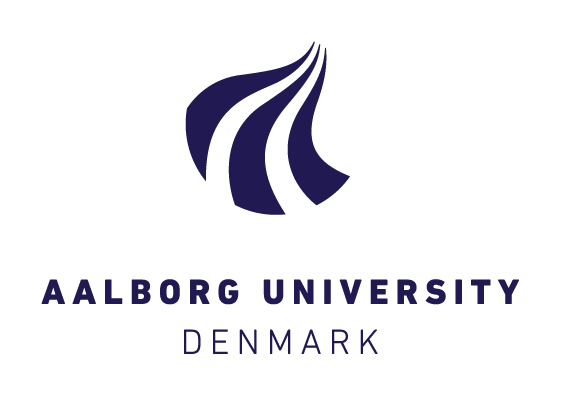29th Nordic Congress of
Welcome to Aalborg
The city of Aalborg welcomes you!
Aalborg is a multi-faceted city full of contrasts. It’s a city with a zest for life and all its pleasures, from fast-paced fun to peaceful oases, from a foaming draft beer to sublime gastronomy, from the Viking Era, through the Middle Ages, to modern art. The city of Aalborg is situated in the North of Jutland, the Western Danish peninsula. Like a vast river, the Limfjord separates Aalborg’s southern part (central Aalborg) from the city’s northern suburbs.
Aalborg is the small big city where all major attractions of big cities are easily reached, as everything is within walking distance. These factors provide the perfect conditions for an inspiring trip to Aalborg – the capital of North Denmark. Aalborg is also a city undergoing a rapid transformation – from an industrial town with smoking chimneys to a modern city.
The former grey, industrial town has developed into a shimmering city of culture and knowledge. The signs of this transition are pronounced; old industrial buildings are replaced, and fascinating architectonic gems arise all over the city, providing Aalborg with a completely different cityscape.
The signs of this transition are especially evident along the city’s waterfront. With its many open-air sports, recreational areas and several cultural centres, the waterfront has much to offer both outdoor- and culture enthusiasts. Take a walk on the waterfront and you will come across some major powerhouses of culture; the old power station Nordkraft, the astonishing architectonic Utzon Center and Musikkens Hus (The House of Music).
Nordkraft used to supply Aalborg with electricity and energy. Today, the former coal-fired power station, located in the city centre, generates a completely different kind of power – cultural power. Nordkraft joins culture, sports, and recreation by housing sports facilities, a cinema, theatres, and restaurants – all in a fusion of contemporary architecture and authentic industrial styles that create a unique atmosphere. With its raw and industrial, yet stimulating look, Nordkraft truly reflects the spirit of Aalborg.
The Utzon Center, situated perfectly at Aalborg waterfront, was the last work of the Aalborg-raised architect Jørn Utzon, best known as the architect who designed the world famous Opera House in Sydney. He described the Utzon Center as “a place where good thoughts could come together and… a centre of excellence for architecture and humanity in the future.”
Musikkens Hus is the latest architectonic lighthouse of Aalborg, but it has quickly become a national and international gathering point for music. The construction of Musikkens Hus is one of the most ambitious and impressive projects in the history of Aalborg. Musikkens Hus is designed by the world renowned Austrian architect firm Coop Himmelb(l)au.
Last, but not least, you can find KUNSTEN Museum of Modern Art located only a short walk from the city centre. KUNSTEN is the only art museum designed by the renowned Finnish architect Alvar Aalto located outside of Finland. It is a truly impressive architectonic masterpiece in white marble, housing a fine art collection and an outdoor sculpture park.
The History of Aalborg
Aalborg is characterised by eras of the past. In and around the city, you will find relics of the past with stories to tell. The city’s roots go far back, and Lindholm Høje’s spectacular gravesite and dwellings are the best examples of that. Lindholm Høje stems from the late Iron Age and Viking Era, and it is a magical sight that meets you as you gaze at Lindholm Høje’s approximately 700 graves and 150 stone ships spread across the hills.
Lindholm Høje was buried in sand in the 9th century due to heavy sandstorms that ravaged the area and forced the Vikings to decamp. Aalborg’s location at the salty fjord, Limfjorden, made the city the obvious choice for a market town. In 1342, it became a reality, and the town quickly became one of Jutland’s largest market towns. Naval officer Skipper Clement was one of Aalborg’s best-known figures in the 1500s, and he initiated an uprising among peasants in the town during the civil war: The Count’s Feud in 1534. Skipper Clement’s forces were captured in Aalborg, and the 7,000-8,000 men died in a massacre. Skipper Clement was later captured, and in 1536 he was executed at Viborg’s parliament.
In the 1800s, industrialisation came to Aalborg and many factories emerged. The town was best known for its many industrial chimneys and despite the transformed city centre, Aalborg is still a major industrial city, however, the signs of it are less visible these days, as the industry has moved outside the city centre. The cement factory, Aalborg Portland, is a product of the industrialisation, and despite having celebrated its 125-year anniversary, it is still a strong player in the international market today. Modern industry is also present in Aalborg, and today it plays a major role in the wind turbine field.
Aalborg – Youth and University City
Aalborg has a clear vision of being Denmark’s best youth city, and for that reason, students have a high priority here. In recent years, a lot of money and time has been invested in Aalborg’s pursuit to attract students, workers and residents to the city. Turning Aalborg into an attractive university city has been an overwhelming success. The number of students has grown, and this huge boom is reflected in the population figures; today, 1 of 4 residents in Aalborg municipality is a student. To accommodate these students, approximately 4,500 new student-housing units have been, and are being, built in Aalborg in the period of 2009-2017. In fact, some of the new housing on the waterfront is for students only.
Not only Danish students choose to study in Aalborg. Around 2,500 international students live and study in the city now. Aalborg municipality takes care of the new students with a “roof-over-your-head guarantee” policy. The housing guarantee applies to all new students looking for a place to live.
Aalborg has gone from industrial town to modern knowledge hub with a global perspective. The international perspective has been decisive for the local development. With an original, high-quality education and research environment, with Aalborg University as its flagship, Aalborg is on the world map of university cities.
In the autumn of 2017, Aalborg University was ranked the best university in Europe and the 8th best university worldwide for engineering according to the Best Global Universities list published by U.S. News and World Report.
In the European Commission’s analysis (Feb. 2016) of 83 European cities, it was concluded that the citizens of Aalborg are the happiest in Europe. Business Insider wrote; “The industrial city in the north of Denmark isn’t exactly world famous, but utilities like a symphony orchestra, a world class university, and a beautiful waterfront, make it not surprising that Aalborg’s citizens are the most satisfied in Europe.”
As you can tell, the people of Aalborg have many reasons to be happy and proud of their city.
It is with great pleasure that we welcome you to the city of Aalborg!
We hope you will enjoy your stay.
Contact
Department of Mathematical Sciences
Skjernvej 4A
DK-9220 Aalborg Øst
ncm29@math.aau.dk
In collaboration with



![]()




